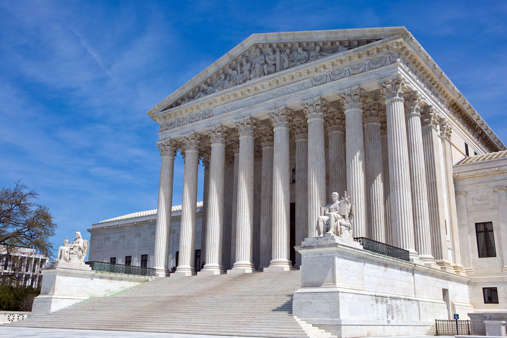On May 15, 2014, the EPA issued a proposed Clean Air Act rule that would create important new air emissions requirements for petroleum refineries. EPA proposed changes to the National Emission Standards for Hazardous Air Pollutants (NESHAPs) for refineries that would require fenceline air quality monitoring; eliminate emission limit exemptions during startup, shutdown, and malfunction (SSM) periods; and include new requirements for emissions from storage tanks, refinery flares and coking units. The proposed rule would also amend the New Source Performance Standards (NSPS) for petroleum refineries at subparts J and Ja to include new emission limits and monitoring and testing requirements for catalyst regenerators, fuel gas combustion devices (FGCD), sulfur recovery plants, fluid coking units (FCU) and delayed coking units (DCU). The new rule is significant because it would codify requirements that, until now, were primarily imposed through consent decrees. Comments are being accepted for 60 days after the proposed rule is published in the Federal Register.
The refinery NESHAP standards would be modified by this proposed rule based on EPA’s residual risk and technology review of two existing NESHAPs: for Petroleum Refineries (40 C.F.R. Part 63, Subpart CC) and Petroleum Refineries: Catalytic Cracking Units, Catalytic Reforming Units, and Sulfur Recovery Units (40 C.F.R. Part 63, Subpart UUU). The Clean Air Act (CAA) requires the EPA to review the NESHAPs every eight years and revise them as necessary. EPA was sued for allegedly violating this mandatory duty for Subparts CC and UUU, and EPA entered into a settlement and consent decree requiring the review that prompted this rulemaking, Air Alliance Houston v. McCarthy, No. 1:13-cv-00621-KBJ (D.D.C., entered May 9, 2014).
First, the proposed rule would add fenceline monitoring requirements for benzene emissions. This is the first time the EPA rules would require refineries to monitor air concentrations of benzene around their fenceline perimeters and make the raw monitoring data available to the public through the EPA’s electronic reporting and data retrieval portal. The proposed fenceline rule would require refineries to deploy passive fenceline monitors that collect two-week time-integrated samples at 12 to 24 points circling refinery perimeters and would set a corrective action concentration level. The EPA estimates the first-year cost for the passive monitoring system could be up to $100,000 for larger refineries (with 24 sampling locations), with $40,000 annual ongoing costs. The EPA states these requirements are a result of advancements in monitoring technologies for detecting fugitive emissions it identified through the mandatory review.
Second, the EPA plans to eliminate the SSM exemption in response to the 2008 Sierra Club v. EPA decision, which held that the CAA requires emissions standards or limitations to be continuous in nature, and that the EPA’s SSM exemption violates this continuous application requirement, 551 F.3d 1019, 1021 (D.C. Cir. 2008). In response to the decision, the proposed rule eliminates the malfunction exemption from the two NESHAPs. As part of that elimination, the proposed rule provides that refineries may not discharge HAPs to the atmosphere from relief valves, and would require sources to monitor relief valves to ensure compliance with the new rule. The EPA proposes to allow refinery owners and operators to use a range of monitoring methods, including a parameter monitoring system on the process operating pressure, or electronic monitors on each relief valve that vents to the atmosphere.
Additionally, the EPA is not including a regulatory affirmative defense provision for failure to comply with emissions standards due to a malfunction in this rulemaking because of the Washington, D.C., Circuit Court’s April 18, 2014 decision in NRDC v. EPA (No. 10-1371, D.C. Cir., April 18, 2014). In that case, the court held that the Portland Cement MACT’s affirmative defense for unavoidable malfunctions is unlawful to the extent it applies to citizen suits. Although the court’s holding only spoke directly to citizen suits, the EPA states that its authority to use case-by-case enforcement discretion to provide flexibility in lieu of an affirmative defense also applies to EPA enforcement actions.
Some of the other significant changes proposed to NESHAP Subparts CC and UUU are:
- Adding MACT standards for DCU decoking operations based on work practice standards instead of emission limits, thus requiring DCU units to either meet a 2 psig pressure limit or install a device to lower the DCU vessel pressure. Note that this change was proposed despite comments from industry representatives that the Refinery NSPS Ja requires DCU at new and modified sources to depressure to only 5 psig;
- Revising the catalytic reforming unit (CRU) purge vent pressure exemption to limit the 5 psig vessel pressure limit exclusion to apply only to passive vessel depressurization;
- Adding operational requirements for flares used as air pollution control devices, specifically that refinery flares continuously operate pilot flame systems with automatic re-ignition systems, and that the flares operate with no visible emissions;
- Adding additional requirements for vent control bypasses as a result of the 2008 Sierra Club v. EPA case; and
- Updating storage tank controls and applicability thresholds to require controls on smaller tanks.
Finally, the new NSPS amendments are being promulgated to address technical corrections and clarifications raised in a 2008 industry petition for reconsideration of the Refinery NSPS Subparts J and Ja. Subpart J would be amended to modify emissions and operations monitoring requirements for fluid catalytic cracking unit catalyst regenerators, FGCDs and all Claus sulfur recovery plants.EPA’s proposed revisions to Subpart Ja are more extensive and would include:
- Adding new emission limits and monitoring and testing requirements for sulfur recovery plants;
- Clarifying that CO boilers can also be FGCD while part of the fluid catalytic cracking unit (FCCU), and therefore subject to new fuel gas emissions limits;
- Requiring annual particulate matter (PM) performance testing;
- Adding new corrective action requirements for FCCU and FCU; and
- Adding new performance testing requirements for fuel gas combustion devices.
EPA is also requesting comments on whether it should keep the DCU work practice standard in Refinery NSPS Ja after promulgating the proposed revisions to NESHAP Subpart CC, since the DCU work practice standard in Refinery NSPS Ja is less stringent than the proposed NESHAP Subpart CC requirements.
EPA will hold two public hearings, near Houston and Los Angeles, to discuss the proposed rule and plans to finalize the standards in April 2015.
A copy of the proposed EPA rule is available online here.
As noted earlier, comments are due to EPA 60 days after the proposed rule is published in the Federal Register.
For more information, contact the Barnes & Thornburg attorney with whom you work, or one of the following attorneys in the firm’s Environmental Law Department: Tony Sullivan at tony.sullivan@btlaw.com or 317-231-7472; Charles Denton at charles.denton@btlaw.com or 616-742-3974; Michael Elam at michael.elam@btlaw.com or 312-214-5630; Tim Haley at 317-231-6493 or timothy.haley@btlaw.com; or Joel Bowers at joel.bowers@btlaw.com or 574-237-1287.
©2014 Barnes & Thornburg LLP. All Rights Reserved. This page, and all information on it, is proprietary and the property of Barnes & Thornburg LLP. It may not be reproduced, in any form, without the express written consent of Barnes & Thornburg LLP.
This Barnes & Thornburg LLP publication should not be construed as legal advice or legal opinion on any specific facts or circumstances. The contents are intended for general informational purposes only, and you are urged to consult your own lawyer on any specific legal questions you may have concerning your situation.
Visit us online at www.btlaw.com and follow us on Twitter @BTLawNews.












/Passle/6488d4630e7e25c9ac9f834a/MediaLibrary/Images/2024-07-18-19-15-33-047-669969d52008239f764a11af.png)


/Passle/6488d4630e7e25c9ac9f834a/SearchServiceImages/2024-07-17-15-17-44-967-6697e0980752df56d2441ada.jpg)
